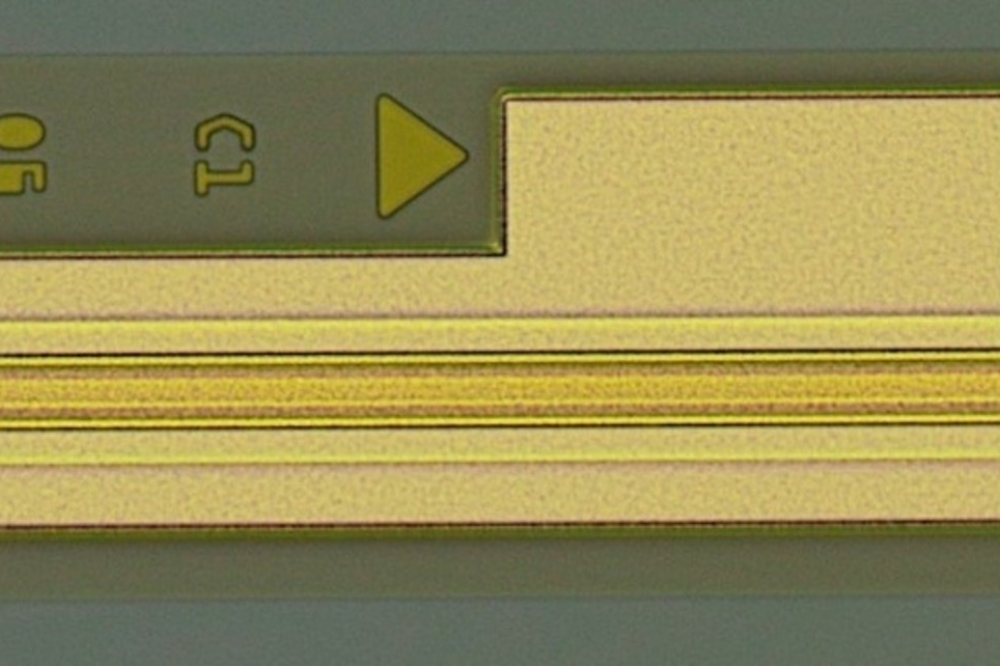News Article
Infinera and ESnet demonstrate first SDN open transport switch
The indium phosphide (InP) platform based on PIC technology demo spanned Manhattan to Upton in New York
Infinera has announced the telecommunication industry’s first successful demonstration of a prototype Software Defined Network (SDN) Open Transport Switch (OTS).
The firm did this in partnership with the U.S. Department of Energy’s Energy Sciences Network’s (ESnet) Long Island Metropolitan Area Network (LIMAN) control plane test bed.
This proof-of-concept demonstration shows the potential of Transport SDN, extending the concepts and benefits of SDN to the dynamic optical transport layer.
The OTS concept is a lightweight virtual transport switch that may be deployed on optical transport systems to interface with a SDN Controller via an extended version of the OpenFlow protocol.
This approach has the potential to facilitate application-driven control over transport bandwidth services, including converged wavelength, OTN and packet transport technologies.
By enabling multi-layer coordination and control, service providers will potentially be able to leverage Transport SDN to improve the utilisation and efficiency of its network infrastructure, increase network resiliency, and deploy new services more rapidly while simultaneously simplifying and automating operations, lowering the total cost of network ownership.
In the demonstration, Infinera tested a prototype of the OTS running on the Infinera DTN InP based PIC platform, allowing ESnet’s optical transport network to be configured by an SDN controller via the OpenFlow protocol.
ESnet enhanced its SDN controller and demonstrated on-demand bandwidth Ethernet services including bandwidth elasticity for data-intensive science experiments at Brookhaven National Laboratory on its LIMAN network, spanning from Manhattan to Upton in New York.
The services were provisioned by a high-capacity bandwidth-on-demand application utilising the SDN controller in three different transport network abstractions, including one based on Infinera’s standards-based GMPLS control plane, showcasing the potential to deploy Transport SDN in networks with existing control planes in production.
In order to implement OTS and extend SDN to the transport layer, the contributing platforms that are used to build this layer must be able to virtualise the digital and optical resources.
Infinera’s Bandwidth Virtualization provides this abstraction by leveraging the integration of a standards-based GMPLS software control plane, integrated OTN switching and photonic integrated circuit (PIC) technology.
This provides a massive, shareable and programmable pool of optical transport capacity. In contrast, conventional optical transport systems are generally more static in nature, with limited or no integrated OTN switching, and do not easily support Transport SDN.
“The emerging era of data-intensive science demands the highest level of performance from the network. The ability for the network to scale and handle large data flows efficiently across a multi-layer network is an essential capability,” says ESnet Chief Technologist Inder Monga. “The type of bandwidth flexibility, automation and resource efficiency demonstrated in this test are critical to supporting the large-scale data transfer requirements of data-driven science research.”
Brookhaven National Lab’s networking team and researchers used this SDN platform to experiment with ultra-high speed data transfer applications being developed for next-generation networks using RDMA over Ethernet protocols.
“Big data applications hosted at BNL and other DOE national labs routinely move petabytes of data over LAN and WAN and require the capability of fully utilising the current and next generation of 100Gbps networks,” said Scott Bradley, Manager of Network Services at Brookhaven National Laboratory. “Software defined networks helps us to meet this challenge and allows us to implement and validate the data transport protocols/software intra-data centers and over WAN in the speed of 100Gbps and beyond.”
“This pioneering demonstration is an important first step on the path toward enabling Transport SDN,” says Chris Liou, VP Network Strategy, Infinera. “For service providers interested in deploying Transport SDN, we believe the OTS can play a key role in realising many benefits, including simplified provisioning of bandwidth services in multi-tiered, multi-vendor, multi-domain environments, increased efficiency and utilisation of network resources, and an open, programmable transport network for enhancing integration and automation with applications.”
“SDN and OpenFlow are finding new applications in the market every day,” continues Dan Pitt, Executive Director of the Open Networking Foundation, which standardises OpenFlow and promotes SDN. “We are excited to see accelerating industry adoption and application of these breakthrough technologies to new areas for the benefit of operators and users with critical performance and flexibility needs.”
The firm did this in partnership with the U.S. Department of Energy’s Energy Sciences Network’s (ESnet) Long Island Metropolitan Area Network (LIMAN) control plane test bed.
This proof-of-concept demonstration shows the potential of Transport SDN, extending the concepts and benefits of SDN to the dynamic optical transport layer.
The OTS concept is a lightweight virtual transport switch that may be deployed on optical transport systems to interface with a SDN Controller via an extended version of the OpenFlow protocol.
This approach has the potential to facilitate application-driven control over transport bandwidth services, including converged wavelength, OTN and packet transport technologies.
By enabling multi-layer coordination and control, service providers will potentially be able to leverage Transport SDN to improve the utilisation and efficiency of its network infrastructure, increase network resiliency, and deploy new services more rapidly while simultaneously simplifying and automating operations, lowering the total cost of network ownership.
In the demonstration, Infinera tested a prototype of the OTS running on the Infinera DTN InP based PIC platform, allowing ESnet’s optical transport network to be configured by an SDN controller via the OpenFlow protocol.
ESnet enhanced its SDN controller and demonstrated on-demand bandwidth Ethernet services including bandwidth elasticity for data-intensive science experiments at Brookhaven National Laboratory on its LIMAN network, spanning from Manhattan to Upton in New York.
The services were provisioned by a high-capacity bandwidth-on-demand application utilising the SDN controller in three different transport network abstractions, including one based on Infinera’s standards-based GMPLS control plane, showcasing the potential to deploy Transport SDN in networks with existing control planes in production.
In order to implement OTS and extend SDN to the transport layer, the contributing platforms that are used to build this layer must be able to virtualise the digital and optical resources.
Infinera’s Bandwidth Virtualization provides this abstraction by leveraging the integration of a standards-based GMPLS software control plane, integrated OTN switching and photonic integrated circuit (PIC) technology.
This provides a massive, shareable and programmable pool of optical transport capacity. In contrast, conventional optical transport systems are generally more static in nature, with limited or no integrated OTN switching, and do not easily support Transport SDN.
“The emerging era of data-intensive science demands the highest level of performance from the network. The ability for the network to scale and handle large data flows efficiently across a multi-layer network is an essential capability,” says ESnet Chief Technologist Inder Monga. “The type of bandwidth flexibility, automation and resource efficiency demonstrated in this test are critical to supporting the large-scale data transfer requirements of data-driven science research.”
Brookhaven National Lab’s networking team and researchers used this SDN platform to experiment with ultra-high speed data transfer applications being developed for next-generation networks using RDMA over Ethernet protocols.
“Big data applications hosted at BNL and other DOE national labs routinely move petabytes of data over LAN and WAN and require the capability of fully utilising the current and next generation of 100Gbps networks,” said Scott Bradley, Manager of Network Services at Brookhaven National Laboratory. “Software defined networks helps us to meet this challenge and allows us to implement and validate the data transport protocols/software intra-data centers and over WAN in the speed of 100Gbps and beyond.”
“This pioneering demonstration is an important first step on the path toward enabling Transport SDN,” says Chris Liou, VP Network Strategy, Infinera. “For service providers interested in deploying Transport SDN, we believe the OTS can play a key role in realising many benefits, including simplified provisioning of bandwidth services in multi-tiered, multi-vendor, multi-domain environments, increased efficiency and utilisation of network resources, and an open, programmable transport network for enhancing integration and automation with applications.”
“SDN and OpenFlow are finding new applications in the market every day,” continues Dan Pitt, Executive Director of the Open Networking Foundation, which standardises OpenFlow and promotes SDN. “We are excited to see accelerating industry adoption and application of these breakthrough technologies to new areas for the benefit of operators and users with critical performance and flexibility needs.”
































